Stay in the know on all smart updates of your favorite topics.
Mobility and transport are crucial for a city to function properly. Amsterdam is considered the world capital of cycling; 32% of traffic movement in Amsterdam is by bike and 63% of its inhabitants use their bike on daily basis. The number of registered electrical car owners in the Netherlands increased with 53% to 28.889 in 2016. Since 2008 car sharing increased with 376%. However, this is less than 1% of the total car use. Innovative ideas and concepts can help to improve the city’s accessibility, so share your ideas and concepts here.
Gezocht: Internship digital security bij Free Press Unlimited
Free Press Unlimited is offering a five to six month internship (32 hours a week) starting in January 2020. We're looking for a tech-savvy student or recent graduate with a relevant educational background and affinity with media development.
You will support several media projects implemented together with international partners. You will join the Gender, Safety & Accountability team in realising projects with global coverage in the field of digital safety and investigative journalism.
Are you drawn to whistleblowing platforms for media, online digital security courses for journalists? Do you feel confident about your knowledge of encryption, privacy, open source software and safe communication options? Then this internship is for you!
The pitfalls of city data strategies
🤔 Is data really the new oil? Do you need big data to tackle an urban challenge? Are you sure?
Cities increasingly realise that defining a data strategy is a journey full of pitfalls and challenges.
[Long-read]: The quest for mobility solutions
We don’t need to look that far in the future to see the mobility challenges of Amsterdam. The number of people visiting, living and working in Amsterdam continues to rise and big events such as EURO2020 and SAIL2020 will have a significant impact.
According to the most recent population forecast, the city of Amsterdam will have more than 1 million inhabitants in 2040 and tourism is expected to grow from 18 million people per year in 2018 to 23 million people per year in 2023. Inevitably, issues such as congestion, the misalignment of the supply and demand for public transport and air pollution are placing growing pressure on the city.
Given these competing demands for the use of public space, Amsterdam is urgently seeking innovative solutions for sustainable, reliable and inclusive mobility. The overall goal is to keep the city liveable and accessible and its citizens healthy and mobile.
Celebrating the 5-year anniversary of AMS Institute, we are launching a series of long-reads. In these long-reads, we attempt to untangle the urban challenges, celebrate successes, collaborations, steps forward, solutions we worked on and the impact we've created over the past 5 years - together with our partners.
Continue reading here: https://www.ams-institute.org/news/innovative-quest-smart-mobility-solutions-long-read/
Amsterdam Smart City partners at Smart City Expo Barcelona part 4: Metabolic
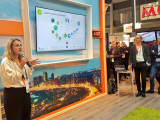
Next week the Amsterdam Smart City team travels, together with a couple of our program partners, to the Smart City Expo World Congress in Barcelona. This is THE leading event for cities in the world. Main goal of the event is to empower cities and collectivize urban innovation across the globe. We asked our partners why they will join the Dutch innovation mission to Barcelona. Now in line: Tamara Streefland, consultant and cities program lead at Metabolic.
Tell us a little bit more about Metabolic!
Metabolic is a consulting, research, and venture building organization focused on tackling global sustainability challenges and advancing a circular economy. Headquartered in Amsterdam, we advise governments, businesses, and NGOs on how to adapt to a fast-changing context, while creating disruptive solutions that can shift how the economy functions. Systems thinking and data-driven analysis are key to Metabolic’s approach, ensuring that root causes - rather than symptoms – are addressed, to drive lasting change.
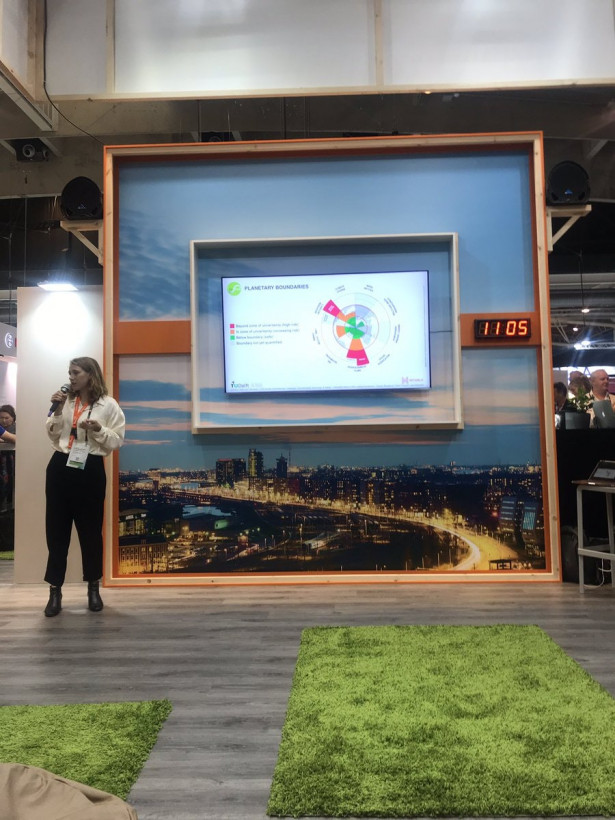
What is your definition of a smart city?
A smart city is a city that uses open data to facilitate the circular economy. A smart and circular city is powered by renewable energy, with clean air and motorless transport. In a smart city, materials are tracked, collected, and reused or repurposed. A circular city goes beyond pollution, recycling, and energy, however, and the city should be integrated with the hinterland by means of nature reserves and green connections to maximize biodiversity within and without. Communities should be tight-knit, diversity is celebrated and communication between different social groups should be frictionless.
Metabolic's vision of a circular city is shaped by our vision of the circular economy. This ideal drives our work with municipalities, cities, regions and countries to accelerate the transition to a broader circular economy. We have worked with multiple cities including Rotterdam, Charlotte, Copenhagen and Amsterdam amongst many others.
What would you like to showcase in Barcelona?
Our objective to go to Barcelona is to meet likeminded people and get inspired by great projects. We would like to showcase the Metabolic Circular Cities Program, which brings cities together around high-impact areas, to drive focused action and stimulate shared learning. By 2050, 70% of us will live in cities. To meet the challenges of today and prepare for tomorrow, cities must rapidly embed sustainable approaches into their development. The ‘Metabolic Circular Cities Program’ – focused on spatial planning – will bring together European cities to accelerate the transition to becoming inclusive, regenerative, and circular.
At the Smart City Expo Barcelona, you can find Metabolic, Amsterdam Smart City and other Dutchies a lot at the Dutch Pavilion. Street D, Stand 473.
Do we see you there?
Hely Start in December Zuidas' Eerste MaaS-dienst.

Medio december 2019 opent Hely haar tiende mobiliteitshub aan het Summertime complex, wat het eerste Mobility as a Service concept op de Zuidas zal zijn. Met een Hely abonnement kan de gebruiker diverse soorten deelvervoer van verschillende aanbieders huren via één app. Hierdoor kan de consument ieder moment op zijn ideale manier van a naar b komen.
Hely is de snelst groeiende MaaS-aanbieder van Nederland, met negen mobiliteitshubs in zes grote steden binnen anderhalf jaar. In december dit jaar opent Hely haar tiende hub op de Zuidas. Deze Hely Hub zal uitgerust worden met diverse soorten deelvervoer van Hely’s mobiliteitspartners, waaronder MyWheels en Urbee. Zo komen er verschillende soorten auto’s, e-bikes en elektrische bakfietsen. De diversiteit aan vervoermiddelen en de directe verbinding met het openbaar vervoer helpt de reiziger met het samenstellen van zijn ideale reis, zonder gedoe met verschillende apps en accounts.
ALL-IN
Een Hely abonnement geeft toegang tot alle vervoermiddelen en hubs van Hely binnen dezelfde stad. In Amsterdam bijvoorbeeld heeft Hely naast de Zuidas nog twee hubs, welke allemaal toegankelijk zijn met hetzelfde abonnement. Naast een kleine abonnementsprijs van €4,95 per maand betaalt de gebruiker per vervoermiddel een vast uurtarief. In tegenstelling tot veel mobiliteitsaanbieders, biedt Hely een all-in concept: geen borg, geen extra kilometer- of servicekosten en brandstof is altijd inbegrepen. Zo weet de gebruiker altijd waar hij aan toe is, ongeacht het vervoermiddel dat hij kiest.
MAAS VOOR BEDRIJVEN
Naast MaaS voor de consument, biedt Hely ook een zakelijk product aan: Hely For Business. Met een Hely For Business account kan een bedrijf al haar medewerkers van mobiliteit voorzien en toch besparen op kosten en CO2-uitstoot. Met deelvervoer worden de voertuigen namelijk veel efficiënter ingezet, waardoor minder vervoermiddelen en parkeerplekken nodig zijn. Bovendien kan dit bedrijven ook helpen met af komen van vele langdurige leasecontracten en stilstaande wagenparken. Met de komst van Hely Hub Zuidas hoopt Hely nog meer bedrijven te kunnen helpen met het efficiënter en duurzamer inrichten van hun mobiliteit.
SAE International Goes “Micro” to Expand View of Mobility
At SAE International, our charge is to embrace opportunities and tackle challenges presented by the evolving mobility landscape. As new players emerge in the mobility space that promote free and easy movement, we’ve expanded our view of mobility to include micromobility.
Leveraging recent strides in vehicle and communication technologies, micromobility aligns with SAE’s commitment to advancing mobility knowledge and solutions for the benefit of humanity. SAE is a neutral party that convenes mobility communities to foster innovation in support of the safe and sustainable deployment of mobility solutions.
Oproep aan alle mobiliteitsvrouwen!
Diverse perspectieven op mobiliteit zijn hard nodig om samen tot goede toekomstbestendige oplossingen te komen. Vind je ook dat een congres programmering met een all-male line-up wel heel 2018 is? Samen worden we beter zichtbaar en vindbaar. Doe je mee? Er staan al 86 vrouwen te schitteren in onze 'wall of fame' en er zijn 108 vakvruowen onderdeel van onze LinkedIn groep. Meld je aan bij het [W]heels Netwerk!
En de mannen? Wordt ambassadeur, fan, spread the word, volg @wheelsnetwerk op Twitter, activeer je vrouwelijke netwerk en weiger vooral te spreken als er geen diversiteit aan sprekers is.
How Amsterdam is learning from Uber's aggregate data
In July Amsterdam signed a ‘social charter’ with ride-hailing operator Uber, following a series of high-profile accidents involving its drivers in the Dutch capital last winter.
This, and more, was discussed at the City Leadership Forum in Vienna.
Bestel het boek ‘Een slimme stad, zo doe je dat’
Dit jaar onderzoekt de Future City Foundation met 26 partners hoe we de smart city moeten ontwerpen. We denken dat de stedenbouw en de producten die daaruit voortkomen radicaal veranderen. Net zoals dat gebeurde met andere bedrijfstakken. We willen begrijpen hoe dat gebeurt, welke kansen dat oplevert en welke risico’s er aan kleven.
De resultaten van het project presenteren we in een boek – genaamd ‘Een slimme stad, zo doe je dat – Verbonden, flexibel en betekenisvol; maak de echte future city’. U kunt het boek (met ruim 200 pagina’s) aanvragen via het aanvraagformulier. Digitaal lezen is gratis, voor een gedrukte versie vragen we €29,-.
Bestel het boek via https://future-city.nl/bestel-het-boek-een-slimme-stad-zo-doe-je-dat/
Tweede multimodale mobiliteitshub geopend in Amsterdam Noord
Slimme mobiliteit heeft de toekomst en steeds meer wordt er geïnvesteerd in mobiliteitshubs. Een mulitmodale mobiliteitshub gaat nog een stapje verder en beperkt zich niet tot alleen deelauto’s, fietsen of -scooters; vrijwel iedere soort deelvervoer is hier te vinden. Deelvervoer aanbieder Hely opent aan de lopende band deze multimodale mobiliteitshubs binnen grote steden in de randstad. Hoewel het concept nog relatief onbekend is, zijn de hubs een groot succes bij omwonenden. Begin september werd zelfs de tweede Hely Hub in Amsterdam Noord beschikbaar gesteld.
HUH, HELY HUB?
Deelvervoerconcepten als car2go, felyx en greenwheels kennen de meeste mensen wel. Je zoekt een beschikbaar deelvervoermiddel in de buurt en zet hem na je rit weer op een willekeurige plek terug. Bij Hely werkt dit grotendeels hetzelfde, alleen haal je het vervoermiddel altijd op in de Hely Hub en zet je hem ook weer terug in dezelfde Hely Hub. Op deze manier weet je altijd zeker waar je de deelvervoermiddelen kunt vinden en grijp je niet mis. Daarnaast is een Hely Hub een verzamelplek voor verschillende soorten deelvervoer. Je vindt hier zowel e-bikes, elektrische bakfietsen, als diverse soorten deelauto’s. Alle vervoermiddelen kunnen gebruikt worden met één app. Dit concept is de kern van mulitmodale mobiliteit.
VRAAG NAAR MULTIMODAAL DEELVERVOER STIJGT
Niet alleen consumenten willen een betere oplossing voor hun mobiliteit, ook vanuit bestuurlijk Nederland wordt steeds meer aandacht besteed aan multimodaal deelvervoer en MaaS als oplossing voor vele maatschappelijke uitdagingen. Een recent voorbeeld is de stikstof uitspraak van de Raad van State, wat ons dwingt om de manier waarop we ons vervoer regelen drastisch te veranderen. De enige duurzame oplossing is om minder auto’s op de weg te krijgen, maar toch mobiel te blijven. In het onderzoek van ABN AMRO werd het deelvervoer concept van Hely als serieus potentieel alternatief genoemd. Eén deelauto vervangt namelijk tot wel 11 personenauto’s, wat niet alleen helpt met de verkeersdrukte, maar ook met het verlagen van de parkeerdruk in steden. Bovendien betekent minder auto’s en meer duurzame alternatieven, ook minder CO2-uitstoot en minder gebruik van fossiele brandstoffen. Dit alles bij elkaar opgeteld maakt dat de Nederlandse overheid evenals de gemeente Amsterdam een ruim budget heeft uitgetrokken om MaaS-initiatieven als deze van de grond te krijgen.
HELY IN AMSTERDAM
Beide Hely Hubs bevinden zich in Buiksloterham, in Amsterdam Noord. De hub aan de Klaprozenweg is open voor iedereen. Hier staan meerdere elektrische auto’s, maar ook reguliere stadsauto’s. Voor een laag tarief vanaf €0,13 per minuut zijn de deelauto’s te huur. Hierbij zijn alle kosten voor brandstof en kilometers altijd inbegrepen, en betaal je per kalenderdag rijden voor slecht 6 uur max. Hely wil met deze competitieve prijsstelling duurzaam deelvervoer toegankelijk maken voor iedereen en hiermee bijdragen aan een groenere, autoluwe buurt. Op www.hely.com/amsterdam staat meer informatie over Hely in Amsterdam en kun je je aanmelden voor een gratis proefmaand.
Amsterdam to lead cross-city start-up collaboration
Amsterdam is in ongoing discussions with Barcelona and Dublin to work closer to emulate and scale up its successful Start-up in Residence programme.
The Dutch capital has just concluded its fourth edition of the 12-week programme which partners with start-ups to innovate to solve city challenges which can then be procured.
Insights from Snapcarr and Flixbus: Machine Learning in Mobility
Only 15 seats left for Machine Learning in Mobility, a free event organized by Enjins and Moqod in Utrecht on 3rd of October.
In this interactive afternoon technical leads from scale-ups and mobility experts will share their Machine Learning use cases and experiences:
Tom van Arman, Smart City Strategist @ Tapp:
» ML as Design Tool to create more meaningful and purposeful public space
Mario Wester, CTO @ Yource:
» Automating Flight Compensation Claims
Dylan Herrebout & William Nolan, Machine Learning @ Snappcar:
» Ranking the Cars
Taras Slipets, Senior Software Engineer @ Flixbus:
» Evolution of AWS Infrastructure for ML, from Zero to Hero!
Sign up now to save your spot: mlmob.eventbrite.com
See you there!
#machinelearning #deeplearning #automating #smartcity #mobility #machinelearning
Bezorging in Zuidas emissievrij
Green Business Club Zuidas (GBC Zuidas) start in samenwerking met Hulshoff een pilot om producten aan bedrijven in Zuidas gratis via een hub gebundeld en emissievrij te bezorgen.
Participanten van GBC Zuidas hebben hun leveranciers van onder andere kantoorartikelen en sanitaire producten gevraagd alle bestellingen aan de logistieke hub van Hulshoff, net buiten de ring van Amsterdam, te leveren. Vervolgens bezorgt Hulshoff alles een aantal keer per week, op afgesproken tijden bij de bedrijven, rekening houdend met het serviceniveau dat de bedrijven gewend zijn. Dit met volledig elektrische vrachtwagens, die zijn opgeladen met lokaal opgewekte zonne-energie. Resultaat: minder verkeer in de stad, minder uitlaatgassen, minder CO2 uitstoot.
Hulshoff biedt deze service gratis aan tot april 2020, waardoor Green Business Club Zuidas, Hulshoff, de deelnemende participanten en leveranciers kunnen ervaren wat de voordelen en eventuele nadelen zijn van het leveren via een hub. Na deze proefperiode kunnen de bedrijven beslissen of ze doorgaan met deze vorm van belevering. Eerder deze maand begon een aantal huurders van World Trade Center Amsterdam al aan de proef.
Technisch dienstverlener en energiebedrijf ENGIE is een van de deelnemers die sinds een paar weken is gestart met de pilot. Tot nu toe lijkt het te bevallen.
“Leveranciers bezorgen onze bestellingen nu bij de hub, en elke dag komt er één elektrische vrachtwagen bij het WTC om de producten af te geven. Dat is voor de medewerkers die bestellingen aannemen ook makkelijker. Het was wel een uitdaging om deze nieuwe aanpak met de leveranciers af te stemmen, iedereen moet er even aan wennen. Maar uiteindelijk moeten we de transitie naar emissievrije logistiek samen waarmaken.” Aldus Ruben Zonnevijlle, contractmanager bij ENGIE Services.
Verder nemen de volgende organisaties deel aan de pilot: Accenture, APG, Arcadis, CBRE, D&B The Facility Group, Heyday Facility Management, ISS Facility Services, Page Group, WTC Amsterdam.
Achtergrond
Vandaag voor 23.00 besteld, morgen in huis, is de trend waarmee online shops hun klanten proberen te trekken. Maar is dit een ontwikkeling die op lange duur houdbaar is? Kunnen we niet door slimmer te plannen en bewuster om te gaan met bezorging toe met minder vervoersbewegingen, en dan het liefst emissievrij? De pilot met Hulshoff is een mooi experiment om er achter te komen of sneller altijd beter is.
Deze pilot past in de doelstelling van de Green Deal ZES, die GBC Zuidas vorig jaar ondertekende. In deze Green Deal committeren partijen zich aan de ambitie om steden in 2025 zoveel als mogelijk emissievrij te beleveren.
Measuring the Circular Economy
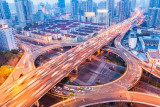
Part of the transition to a circular economy is measuring how circular our current economy really is. Metabolic fascilitated a workshop with the Netherlands Environmental Assessment Agency, Planbureau voor de Leefomgeving (PBL), which brought government ministries and municipalities to the table, to discuss how best to measure the circular economy in the Netherlands. Intra-governmental cooperation is crucial to measuring the different levels of the circular economy across cities and regions. Check out the report! (in Dutch)
https://www.pbl.nl/publicaties/meten-om-te-weten
And read more about our work here: https://www.metabolic.nl/news/measuring-the-circular-economy-the-dutch-pioneers-leading-the-way/
Dating site for excess materials
The Excess Materials Exchange is, simply put, a dating site for waste. Vikas Pandey, CTO: “We use exponential technology to connect suppliers and buyers of excess materials so that waste can become the valuable resource it actually is.”
Future Mobility Amsterdam - 8 Concepts from California College of the Arts

As of the 1st of July 2019, Amsterdam officially began to ban the use of mobile phones while biking. How then, do we safely use navigation apps while biking? Graduate design students from the California College of the Arts Oakland asked these questions and many more during their summer program “Urban Mobility Amsterdam”. For example, one industrial design team proposed a hands free solution titled “INNATE” an Intuitive Navigation System for bike grips to connect your favorite Map app and guide you safely through the city via haptics and LED signals built into your handlebars! The students developed and presented their final concepts at Van Moof HQ on Thursday 27 June. For more information about this concept and 7 more please visit http://bit.ly/Maas-AMS
Week van Schoon Vervoer - 16-22 september
Van 16 tot en met 22 september organiseert Amsterdam de Week van Schoon Vervoer. Eén van de activiteiten tijdens deze week vindt plaats op 20 en 21 september; een groot proefritten-evenement bij het Olympisch Stadion. Maar er is zo veel meer te zien en ervaren op het gebied van schoon vervoer in de stad! Meedoen door een leuke of interessante activiteit rondom duurzaam vervoer te organiseren? Laat zien welke oplossingen er zijn, welke voordelen schoon vervoer de stad biedt of laat Amsterdammers het zelf ervaren!
Wil je zelf ook een activiteit organiseren in deze week? Bijvoorbeeld de buurt mobiliseren voor een duurzaam vervoersconcept? Met een festiviteit aandacht vragen voor het belang van duurzaam vervoer in onze stad of voor de mogelijkheden die er tegenwoordig allemaal zijn? Of Amsterdamse kinderen kennis laten maken met schone voertuigen? Laat het ons weten! We nemen dan contact met je op over de mogelijkheden om de activiteit een mooie plek te bieden in dit stadsbrede programma.
Meld je aan via: https://www.amsterdam.nl/parkeren-verkeer/amsterdam-elektrisch/nieuws/week-schoon-vervoer/
How city data is transforming the way we live
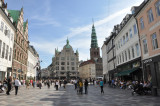
How city data is transforming the way we live
8 cities show how smart data is changing the way we live. From Las Vegas to Copenhagen, smart technology is used everywhere for an efficient, safe and pleasant living environment. How exactly does smart data management work and what advantages do new technologies have for companies and the residents of the city?
1. Las Vegas: live data
Bold, brash and operating 24-hours a day, Las Vegas is a city like no other, attracting millions of visitors a year to its bustling casinos. But as well as hosting 43 million tourists each year, the city is home to almost 650,000 residents who need services including public safety, transportation and utilities. City officials recently turned to smart city data management to ease the pressure.
They used Hitachi’s Smart Spaces and Video Intelligence solution, which is a combination of hardware and software that leverages intelligent video and other internet of things (IoT) data to provide a single view of activity, operations, and safety issues with intelligence for real-time data and analysis, deploying resources more efficiently.
For example, the city can produce heat maps of streets that can indicate if a pothole is likely to develop in a given location and take steps to fix the issue before it starts to damage vehicles. Elsewhere, rubbish collection routes have been reduced from ten hours to four, redeploying employees to help with other services.
2. Seoul: smart waste solutions
With almost ten million people living in Seoul, South Korea’s capital city, waste management has become an area of focus and, as one of the most high-tech cities in the world, it’s no surprise that big data and IoT has become part of the solution.
“Ecube Labs was founded in Seoul when the first smart city projects started to emerge in Korea,” explains Guillaume Weill, project director at Intralink. “The company’s focus is on four main products, which have now been installed in more than 150 locations in Seoul, from parks to department stores, leisure venues and tourist districts.”
These include solar-powered waste bins which compact rubbish, fill-level sensors monitoring the quantity of waste in each bin, a big data platform gathering the information from the bins and a platform that automatically refines manual collection routes based on machine-learning algorithms, bringing huge cost-savings and a cleaner city.
3. Amsterdam: 3D-printed smart bridge
With its network of canals, Amsterdam has more bridges than almost any other city in the world, around 1,800 in total. But what if smart city data management meant those bridges could talk to other infrastructure to optimise travel around the city? The MX3D bridge is the world’s first 3D-printed steel bridge designed by Joris Laarman Lab in collaboration with Arup and supported by Autodesk and other partners.
Dutch firm MX3D is using industrial six-axis robots, proprietary software and welding machines that deposit stainless steel from thin, molten wire to build the 40-foot-long smart pedestrian bridge spanning the Oudezijds Achterburgwal, one of the oldest canals in Amsterdam.
Equipped with sensors, the bridge streams data to the cloud where it is then processed and interpreted to visualise intelligence about bridge traffic, structural integrity, and the surrounding neighbourhood and environment. The bridge can send alerts when it needs maintenance and can even talk to roadways to time the lights better to reduce congestion at busy times.
"Innovative solutions ensure enormous cost savings plus a cleaner city"
4. San Francisco: smart cycles
One of the strategic goals of the San Francisco Municipal Transportation Agency (SFMTA) is to prioritise transport that doesn’t involve a car. Part of its vision for a sustainable transportation system includes a safe network of bicycle-friendly streets so people of all ages and ability can feel confident travelling on two wheels.
The SFMTA uses automated counters to monitor key bicycle data, which it analyses annually to get an idea of cycle use in the city. Using the information provided by these smart monitors, the SFMTA added ten miles to the bikeway network and created thirty new intersections. Of those new miles, 5.5 received physical protection from passing traffic.
More than eight million bikes were counted at forty locations in 2018, but the data showed 63 per cent of the weekly ridership was occurring in just seventeen of the fifty-one reporting counters. This information enables the city to focus its improvement efforts where they are needed most.
5. Stratford, Ontario: perfect parking
Parking in cities is often frustrating and time consuming. But with the help of smart city data management, it can become a much simpler affair. Seeing the opportunity, the City of Stratford in Ontario, Canada, has invested in smart technology so visitors can spend less time trawling for a space and more time spending money in local businesses.
The city has installed 78 IoT sensors thatmerge information with global positioning system, or GPS, data and relay whether a parking spot is free or empty, with updates provided every half an hour to an Amazon Web Services MQTT Broker, which relays the update to the Information Builders WebFOCUS data analytics platform. WebFOCUS then creates easily read visualisations, which convey which spaces are free where, when the busiest parking periods are, and which are the preferred car parks, levels and spaces used by residents and visitors.
6. Edam-Volendam: smart lighting
With its authentic streets and charming fishing port, Edam-Volendam is a real tourist attraction. The municipality wanted to reduce the energy bill for public lighting and at the same time ensure a safe environment for visitors and residents. The smart lighting systems from Luminext in combination with LED luminaires from Lightronics and Lightwell provide the solution.
By illuminating only where it is needed and by dimming as soon as there is no traffic on the street, Edam-Volendam saves energy while ensuring a safe environment. With the smart lighting technology in the luminaires and the telemanagement system from Luminext, the public lighting network is controlled and managed remotely.
The smart lighting ensures that the amount of light is automatically adjusted to the need for light on the street. More light in dark alleys enhances the feeling of safety and dimming the street lighting in a residential area causes less light nuisance in the bedroom, which is good for a good night’s sleep. The smart lighting system automatically detects defective lamps, allowing repairs to be started quickly and to make the lighting function well as soon as possible. That also benefits street safety. The lighting installation and energy consumption are continuously monitored to be able to dim the lighting as efficiently as possible. As a result, the energy savings are optimal.
7. Copenhagen: energy saving
With dwindling global energy supplies and the environmental impact of certain types of energy, cities must look carefully at their use. It’s unsurprising then that energy use is a huge consideration when it comes to smart cities using big data.
Frederiksberg Forsyning, a publicly owned utility company in Copenhagen, aimed to create a smart energy supply solution that would optimise their supply network and create efficiency savings. One of the issues with doing this is the reliability of data, with utility companies often reliant on customers for monthly or yearly meter readings.
To tackle this, the company created a connectivity network across the municipality and then installed sensors in their pipelines to measure usage from the point of production to the substation and on to the end-customer. They went from getting infrequent customer readings to 700 data points a second, seeing savings on water loss and energy use.
8. Brussels: Smart transport tech
The Belgian capital city of Brussels relies on four metro train lines, seventeen tram lines and fifty bus lines to get its residents where they need to go. STIB–MIVB, the company that runs these services tracks 401 million journeys a year and 1,200 vehicles. To handle the stream of big data, it partnered with SAP and Cubis to access the analytics needed to improve customer service and run the system more efficiently.
As well as improving the experience of commuters and visitors, the partnership has enabled more proactive vehicle maintenance, greater transparency when it comes to use of public funds, the ability to cater for passengers with disabilities and reduced environmental impact.
“Cities are full of data that can help us better understand travel times, routes and crunch points on a network,” says Brian Duffy, SAP’s Europe, Middle East and Africa north regional president. “If used in the right way, data insights can help people get to where they are going faster, more efficiently and more reliably.”
Sources: Luminext & ‘Future Cities’; Special editen by publisher Raconteur, international distributed with The Times in june 2019.
More information at Luminext.eu or info@luminext.eu
Event recap: MaaS Transit Getting Around Smart in Amsterdam

Imagine a future Amsterdam where personal combustion engine vehicles are a thing of the past – resigned to an exhibit in the Rijksmuseum. Laugh now, but we may be closer to that possible future than you think. WeMakeThe.City recently held a discussion on the future of travel in and around the center of Amsterdam. The prognosis? Mobility-as-a-Service (MaaS) is a way for the city to manage growth and congestion while improving the quality of life of residents. A recap of the event by our special reporter Derrek Clarke.
MaaS transit consists of both private and public transportation solutions that are consumed as a service through a single interface. Instead of personal vehicles, travellers will have their choice of shared electric cars, bicycles, scooters, trams, trains and ferries – whichever mode of transportation fits their needs.
“Multi-modal (MaaS) transit is the future of urban travel and its coming to Amsterdam.” – Miguel Gamino Jr., Head of Global Cities at Mastercard
Amsterdammers will not be forced to give up their cars immediately, but incentives are already being put in place to drive change. This summer the city has already embarked on a plan to replace around 11,000 streetside vehicle parking spaces in the urban center with more bike racks. In addition, smarter infrastructure management practices have also been piloted around the ArenAPoort area. Here drivers and public transport users are provided with transport information such as wait times, the location of available parking and payment instructions – all of which have led to 75% lower congestion in the area.
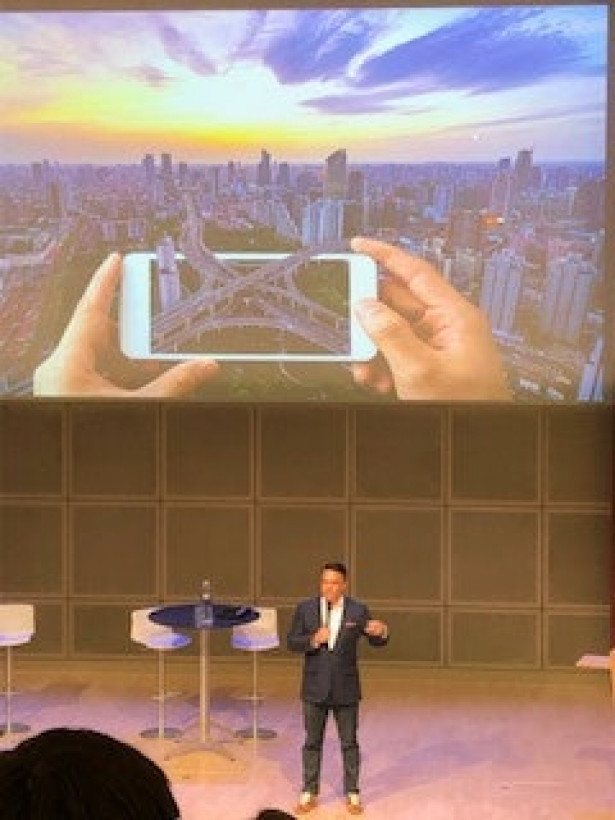
Sounds great doesn’t it? Less congestion and traffic frustrations, fewer accidents, lower costs, safer travel. Getting there won’t be easy through. As Robert Jan ter Kuile, the Strategy Officer for GVB states, “This will entail accommodating different travel needs from disparate destinations such as from rural locations to urban locations or vice versa”. This transition will require the formation of more public-private partnerships to be successful. Government agencies will need to partner with fast moving private companies to create the infrastructure to support a MaaS transit vision of the future that finds the right balance between different modes of transportation.
Envisioning Transportation Equality For All
Finding the right balance of technology to support MaaS transportation will not be easy. For example, replacing all personal vehicles or public transportation with ridesharing may create more problems than is solved. As Oded Cats, an Associate Professor at TU Delft and AMS Institute points out, “…with ridesharing, as demand increases travel time will also increase as riders have to wait longer for a car to arrive. This will lead to increased ride cancellations as people become increasingly frustrated with extended waiting times”. However, having more rideshares available will also mean that another, potentially available car will not be far away.
Increasing the number of combustion engine cars constantly roaming around Amsterdam in search of passengers will not help air quality. This is where alternative fuel vehicles such as electric or the often-hyped hydrogen fuelled cars will come into play. To be successful, service providers will need more infrastructure than what is currently provided. The current limited number of EV charging infrastructure for cars and other vehicles is hampering growth in the use of electric vehicles. Charging locations have to be more visible and frequently located to instil confidence in users that if a car is running low you won’t be stranded in the middle of a journey. Hydrogen fuelled cars are still quite far off into the future.
Investing in EV charging infrastructure will also benefit the adoption of electric buses, trams and the transition to more energy efficient buildings. Yes, you read that right, EV charging infrastructure can help make buildings more energy efficient. This is accomplished through the use of bi-directional charging. In this way, the EV charging infrastructure can act as batteries for buildings – feeding electricity back when the price is high and vehicle batteries are already fully charged. Not only will this reduce energy costs, but it will also alleviate pressure on ageing utility grids. This is a step towards being a smart city through smarter infrastructure. As Vivek Makhija, Head of E-Mobility and Advanced Biofuels at Royal Dutch Shell stated, “We will need a mosaic of energy futures moving forward (to transition to a smarter urban future)”.
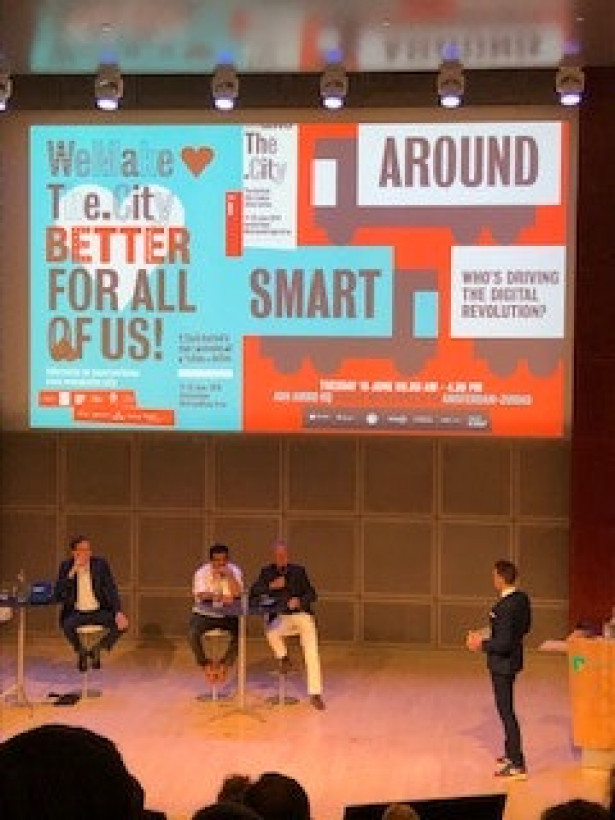
The Future Is Uncertain Until We Decide To Create It
In the end, it is up to the citizens of Amsterdam to effect change. Some 40 years ago, the people of Amsterdam, neighbourhood by neighbourhood decided to become a more bike centric society. This transition is still happening today. The same effort will be required to transition to a MaaS transit society. To get there though, we will have to answer some tough questions about ourselves. Franka Couzy, Head of Sector Research at ABN AMRO voiced some of these questions such as “Am I ready to give up my car?”, “Is there a good replacement system I can rely upon?”, “Is my expensive parking space going to become a stranded asset?”, and “How much privacy am I willing to give up for personalized transportation services?”.
To be successful, the development of a MaaS transit system is going to require the active participation of private enterprise, government agencies and private citizens working alongside each other. This is the next evolution of the problem of the commons – where we all have to pitch in to protect and support our collective environment. It’s time for change, are you ready?
Text and photos: Derrek Clarke
Event report: Will the cities of the future be car-free?
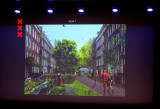
Climate change, air pollution and lack of space - issues to a lot of cities. Is the solution to become car-free? The third day of the urban festival WeMakeThe.City festival saw experts from industry, academia and government come together to discuss the future of urban mobility during the “Autoluwe Stad” conference. Read the report, written by Ellie Roy.
Rethinking the role of cars
Rogier Elshout, moderator of the conference, started by asking the audience: “What should the city of Amsterdam aim to achieve by 2040? Should the city become emission-free, completely car-free or should the government just leave things as they are?” The audience clearly favoured a city in which pollution was avoided and the role of cars reduced. Like many other cities worldwide, Amsterdam has already set a concrete goal for the future: by 2030 the city will be emission-free for all forms of transportation. In order to make this happen, sustainable alternatives to the car need to play a larger role.
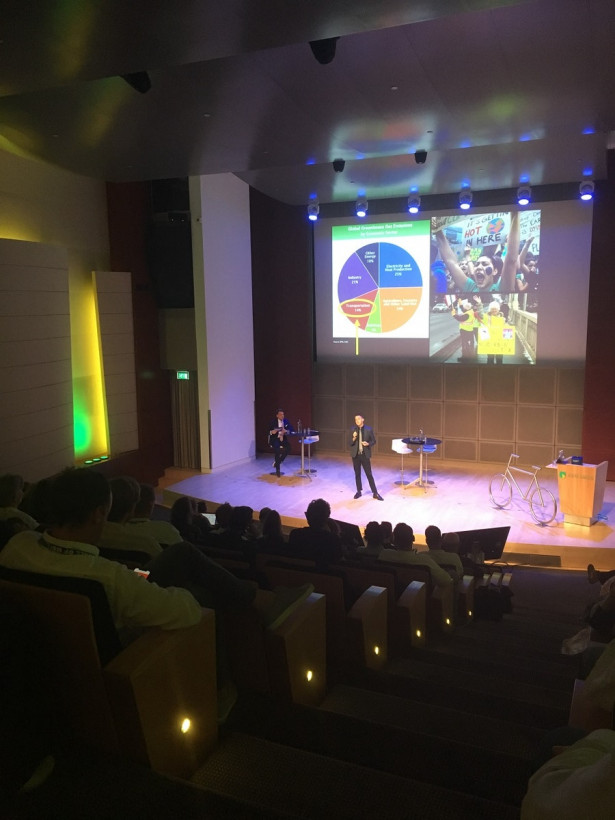
For the last decades cities, including Amsterdam, have focused on a car-centred design. Max Hirsh, research professor at the University of Hong Kong, explained how this poses a challenge: “For many people not having a car would lead to a reduction in quality of life. This issue is particularly relevant for those living on the outskirts of the city where the public transport network is more limited. This results in a phenomenon referred to as the “last mile problem” - the challenge of connecting transportation hubs with people’s final destination. While this problem persists, cars will remain the dominant mode of transportation.”
For improvements to be made, Max believes that the relationship between the car and the city needs to be reconsidered fundamentally. In order to do this “we need to start by looking at people’s desires and needs - rather than telling people how they should live. We should look at how they are living and ask them if they necessarily need a car to achieve these different tasks.” In his opinion, providing cheaper and more convenient alternatives is the solution to changing people’s behaviour. Innovations in e-commerce and logistics could play an important role. For instance, home delivery services and airport luggage collection would provide people with an alternative to transporting heavy items themselves, therefore reducing the reliance on the car.
Making car-free make sense
The City of Amsterdam is already taking steps towards reducing car dependence by investigating and implementing cleaner and smarter mobility options. Sharon Dijksma, Deputy Mayor for Traffic, Transport, Water and Air Quality, explained the city’s plans for the coming years. “We want more space and better air quality, therefore it is necessary to reduce the space for cars in the city in favour of cyclists, pedestrians and other modes of transport. In order to achieve this, a variety of new concepts are being tested. For example, in many neighbourhoods “eBuurthubs” will be developed together with residents. These are places where different types of sustainable mobility will be clustered, allowing alternatives to private car ownership (such as e-bikes and shared cars) to become more accessible.”
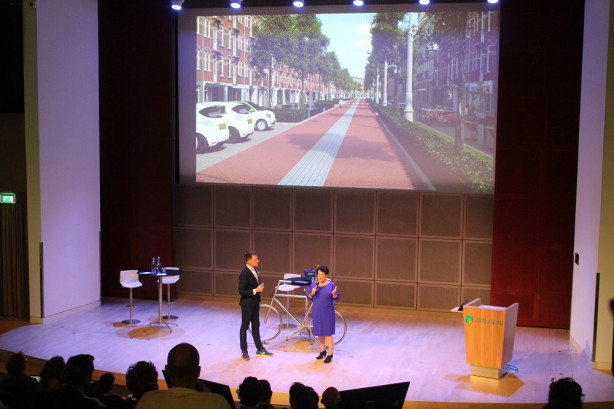
In addition, the city has conducted research into the feasibility of becoming less car dependent. A so-called “travel test” was conducted, in which 70 people handed in their car keys in exchange for a budget to spend on alternative modes of transport. Diederik Basta from Amsterdam’s CTO Office and Marije van Gent, researcher at the Hogeschool van Amsterdam, discussed the outcomes of this experiment. Diederik explained that one of the most surprising conclusions was that none of the participants finished the 500 euro budget. Furthermore, one third of the participants decided to give up their car after the experiment. Marije pointed out that most people participating in the study were already considering going car-free. However, the results illustrate that being less car dependent is definitely a feasible option.

In many cities worldwide, Uber has become one of the companies helping to make car-free alternatives become more feasible. More than just a taxi company, Uber is expanding its services to include sustainable mobility options. Thijs Emondts, general manager of Uber Benelux, presented the company’s new vision. “Ultimately taxis and cars were just the start, the strategy is to become a platform for all forms of mobility”. Ride shares, e-bikes and public transport will all be incorporated into the platform. An entire journey could be made using one app, allowing sustainable alternatives to become easily accessible. This type of service could provide the city with many benefits. Sharon Dijksma was clear to emphasise the importance of policies to regulate new services, particularly in relation to data collection and privacy. “Anyone offering mobility services in the city also needs to be held accountable”.
Greener streets
Of all of the initiatives presented during the conference, one of the most striking was the redevelopment of the Frans Halsbuurt, initiated by residents of the neighbourhood. The Frans Halsbuurt is an area in Amsterdam characterised by narrow streets and many pedestrians and cyclists. Residents put pressure on the local municipality to remove all parking spaces and redesign the public space to create a better living environment. Peter Ulle, senior designer for the project, explained how collaboration with the residents was made a priority and used to establish the starting points for the design. A rough sketch of what the area might look like in 2020: an impressive vision of green public space. It made the audience wonder: is this what the car-free city will look like...?
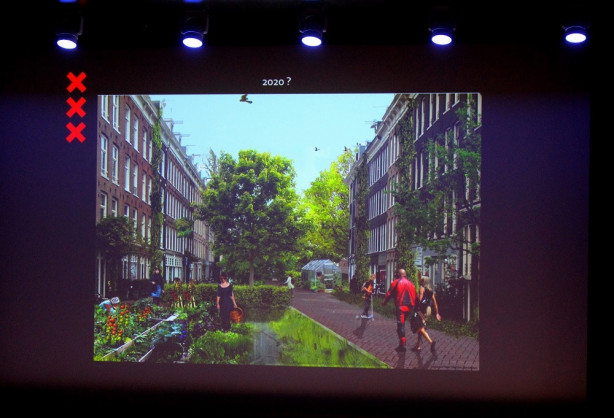
Text and photos: Ellie Roy
Stay up to date
Get notified about new updates, opportunities or events that match your interests.

